Western Digital is back at it with a higher-capacity take on a concept we have seen tried many times. First, Western Digital announced that we can expect to see new 20TB drives coming out soon. Second, the drives announced today will have OptiNAND technology, which embeds iNAND storage on the drive for additional capabilities.
Western Digital 20TB ePMR Hard Drives with OptiNAND
Western Digital showed a chart that highlights two trends. First, the stall we saw in 2014-2018 in terms of areal density. After the hard drive manufacturers consolidated, achievements in increasing areal density slowed. Now, the demand for storage is pushing drives to higher capacities.
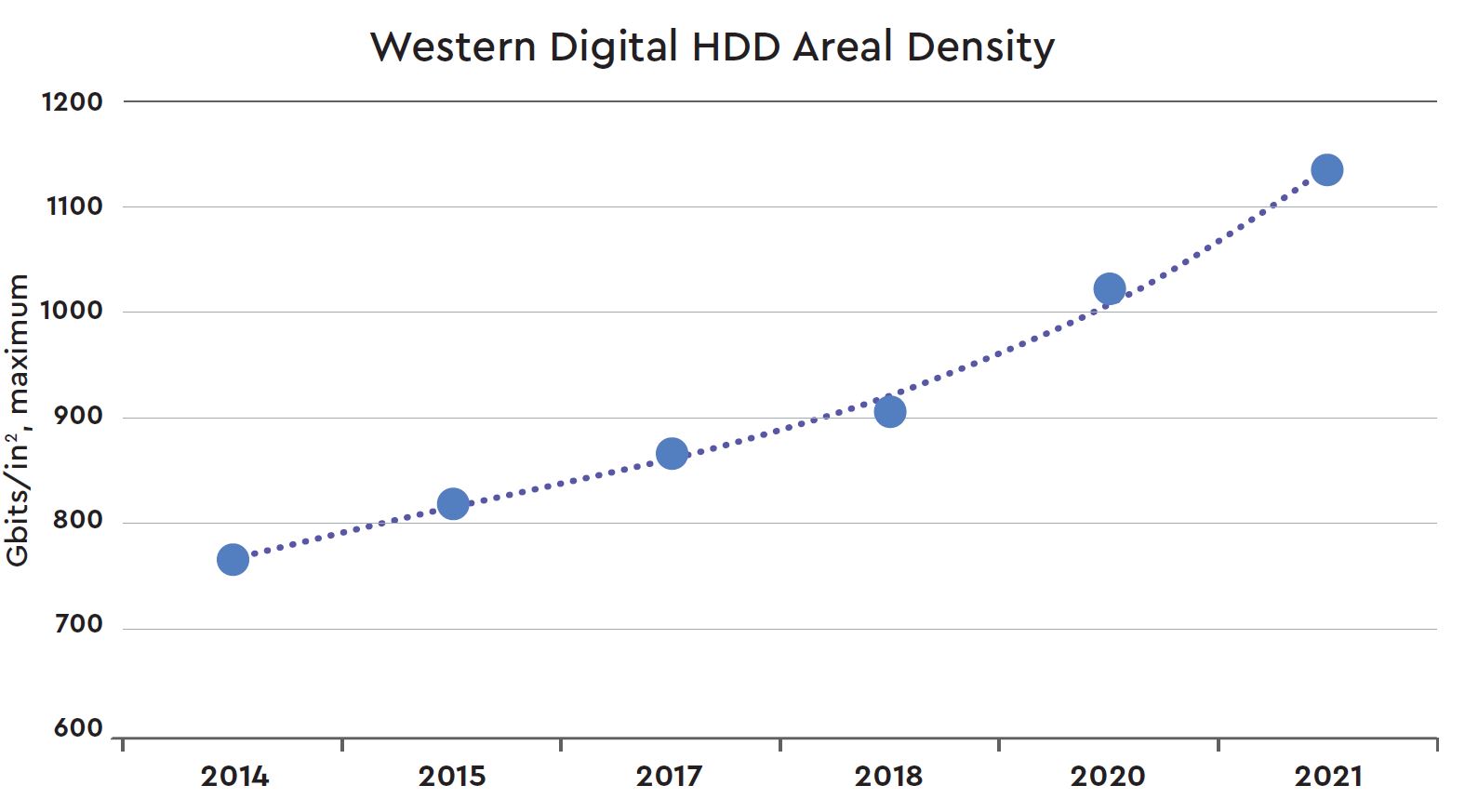
Second, we noted in our WD Gold 16TB 18TB and 20TB Models coming plus EAMR piece that WD has a number of new technologies coming to enable higher densities. One of those is energy-assisted magnetic recording or EAMR. The triple stage actuator (TSA) allows for greater tracks per inch which helps achieve higher areal density. This allows for 20TB drive sizes even with CMR, not having to go to SMR. WD is specifically calling out that the new drives are CMR which is good as we covered in Surreptitiously Swapping SMR into Hard Drive Lines Must Stop.
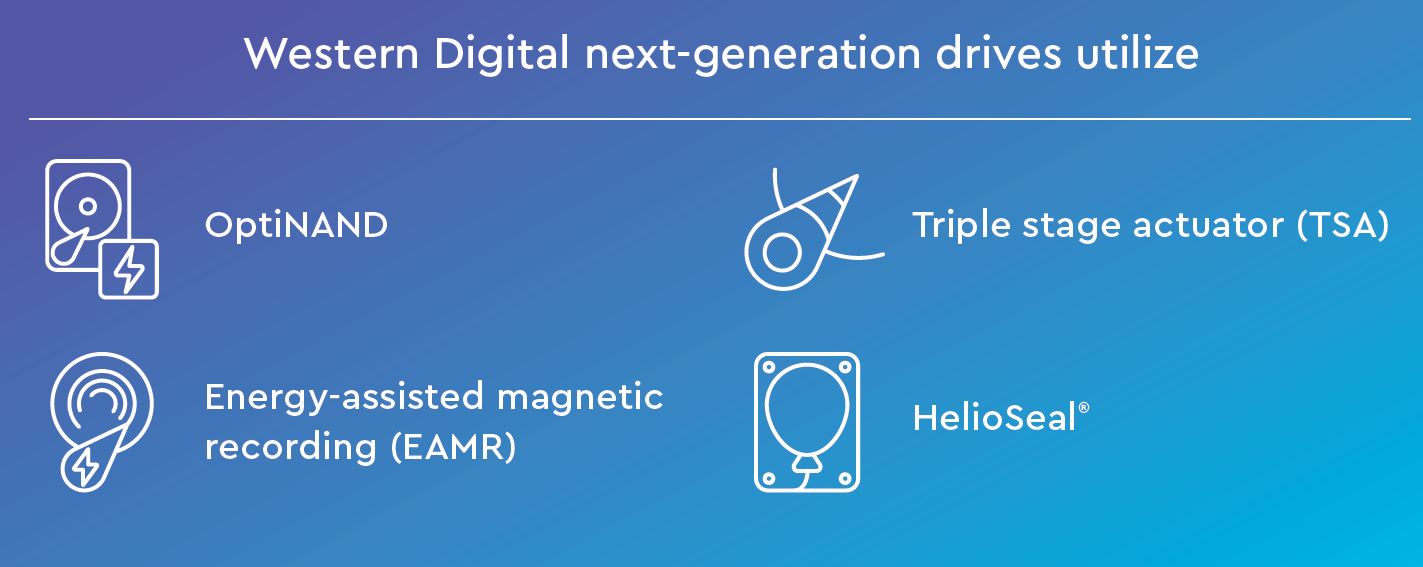
OptiNAND Technology
The major technology announcement for today is OptiNAND. This technology pairs the onboard BGA SoC on WD drives with NAND across a UFS interface. The iNAND is not user-accessible, it is instead utilized directly by the SoC along with onboard DRAM to act as an accelerator for drive functions.
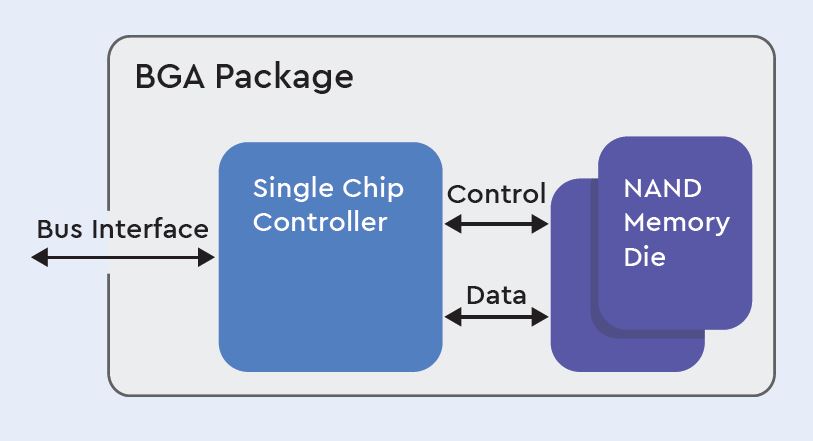
WD is insistent that OptiNAND drives are not similar to hybrid HDDs of the past that combined a NAND flash cache with traditional mechanical storage; user data is not stored in the NAND. Instead, they are using the NAND to hold the self-generated drive metadata rather than storing it on the spinning platter.
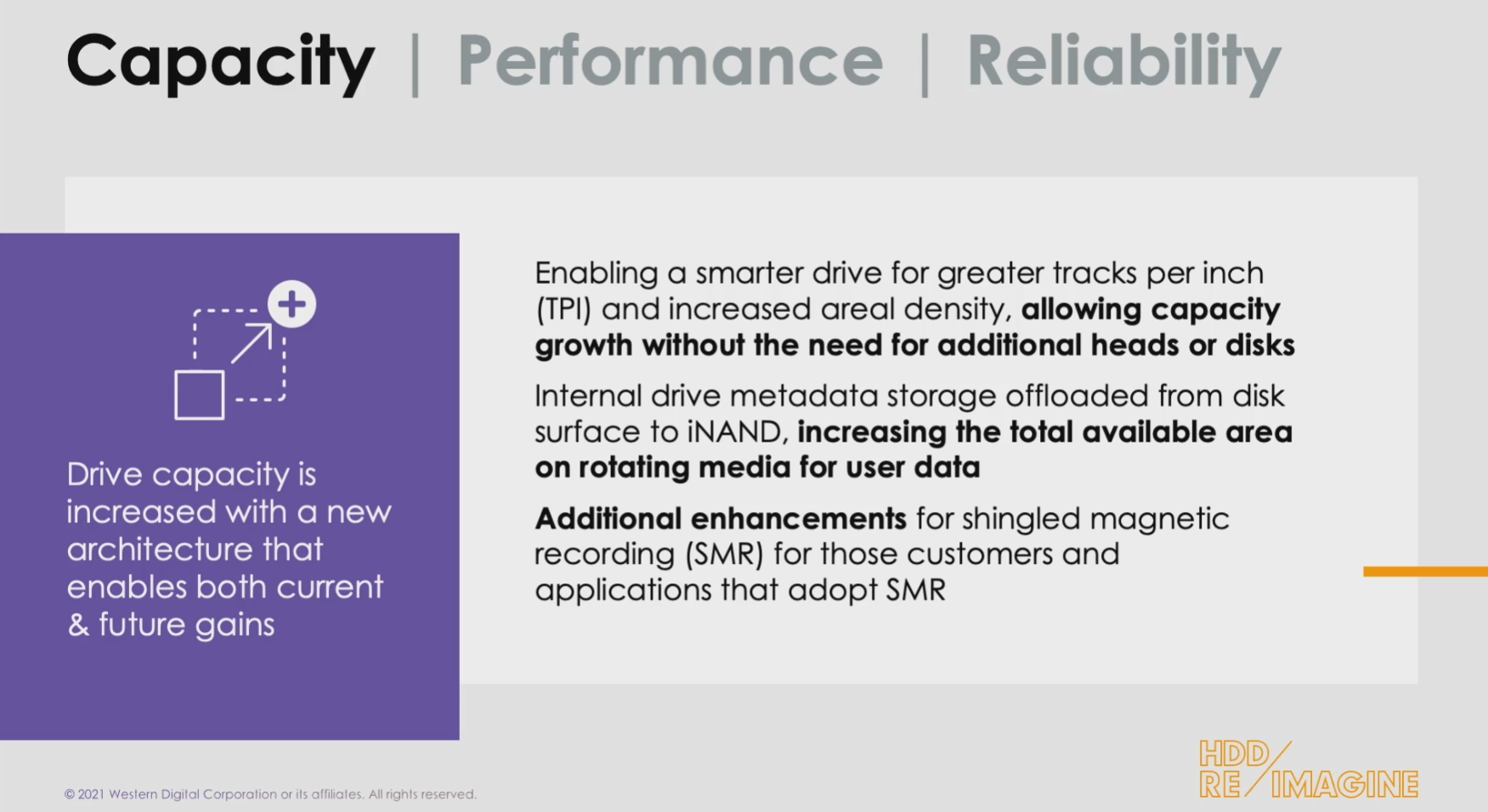
Since this metadata is no longer stored on the platters of the disk, user-accessible space is increased. WD also indicated that as the areal density of their drives increases that the capacity gain from this metadata offload would increase as well.
Additionally, the metadata offload results in improved performance on the drive.
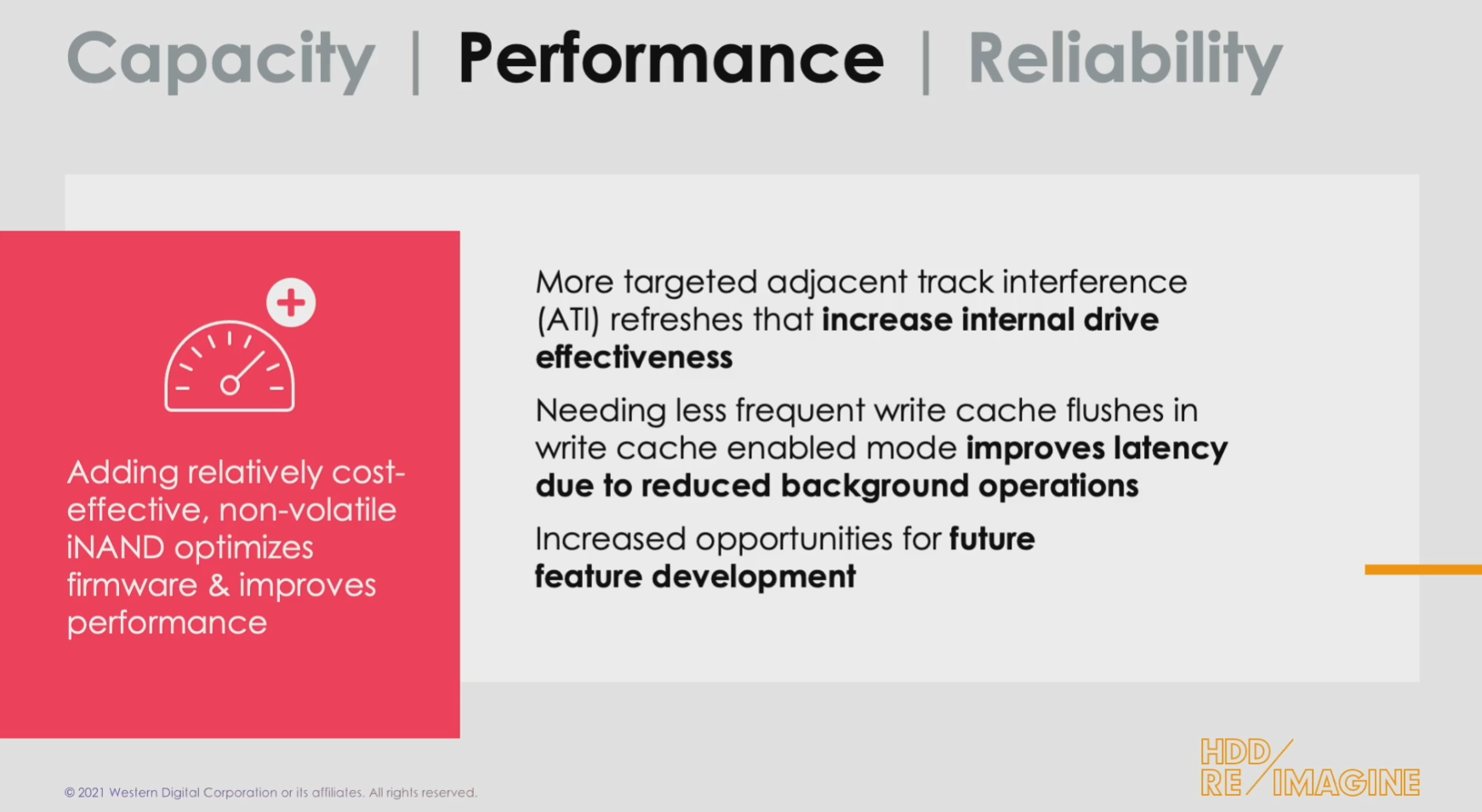
Since the drive spends less time seeking on the disk for this metadata, and can instead pull that information from the iNAND flash, the drive’s overall performance increases. This is also their strategy for increasing drive performance without adding actuators/read heads like Seagate is doing.
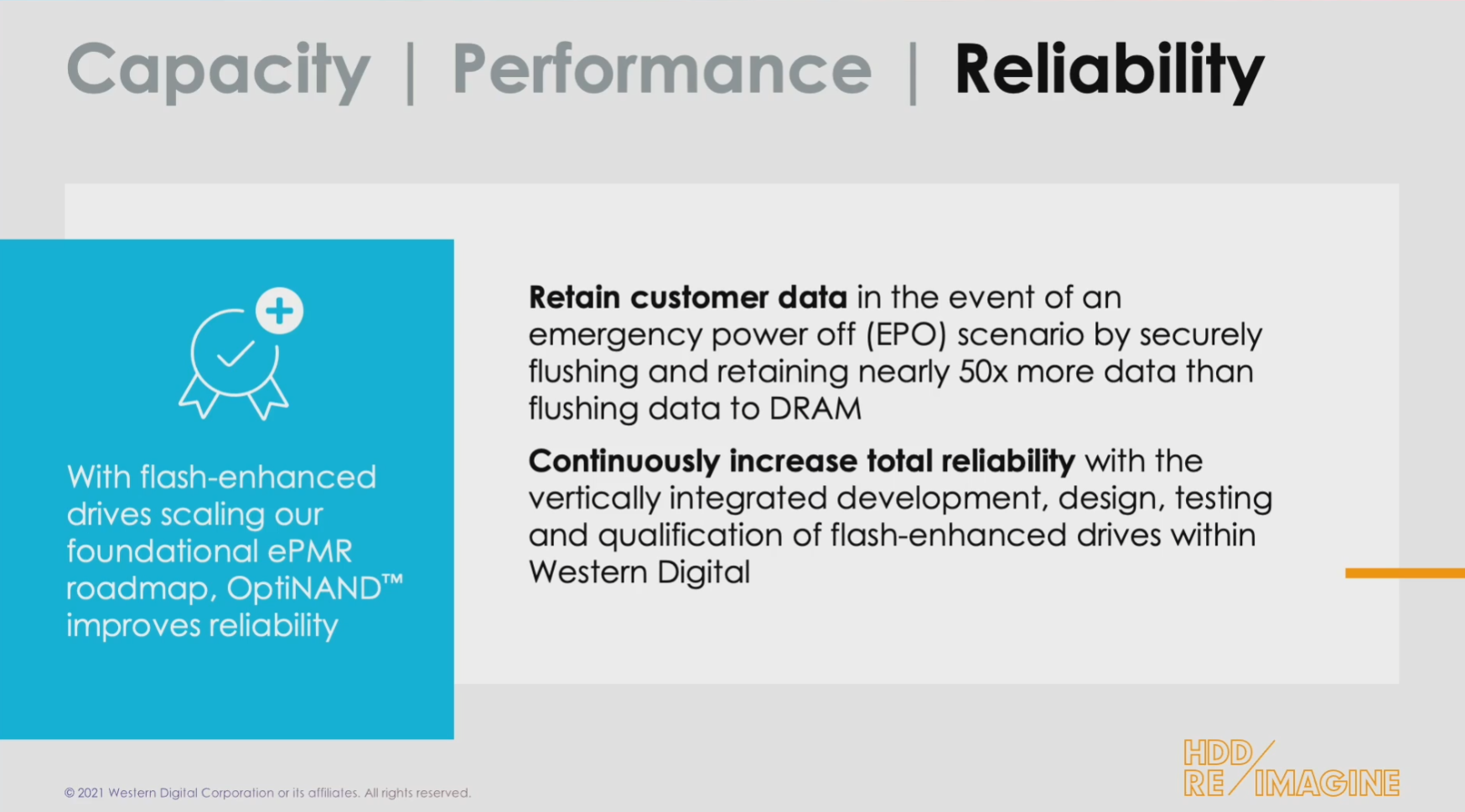
WD is making claims of increased reliability as well. Their drives are able to flush data to a dedicated partition within the iNAND in the case of a power loss and capture much more in-flight data than attempting to flush transactions to mechanical disk. This is the only time that user data is written directly to iNAND, since normally it is not used as a write cache. Additionally, since there is now an active flash component to the drives WD is adding health indicators to the SMART information provided by the drive so that the health of the NAND can be monitored.
WD expects to be able to use this combination of technologies to scale to much larger hard drive capacity:
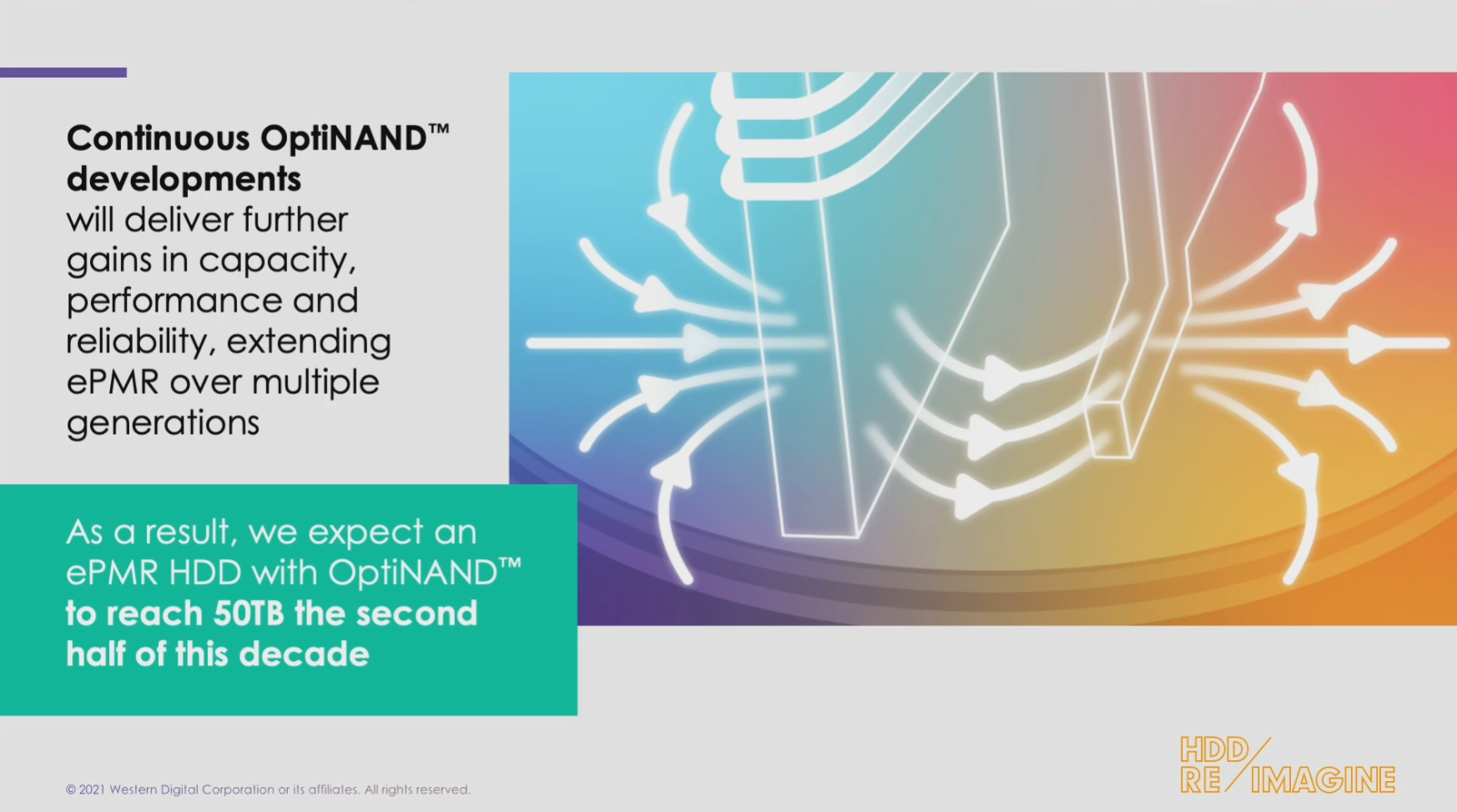
WD is targeting 50TB drives using their energy assisted recording and OptiNAND by the late 2020s.
Additionally, WD is positioning the OptiNAND enabled improvements to their drives will be interface-agnostic; they can produce drives for SATA or SAS or whatever and there is no compatibility changes or host awareness that needs to be enabled to reap the benefits of these drives. In effect this technology is drive-managed.
Final Words
WD says these drives are shipping today to select, nameless customers.
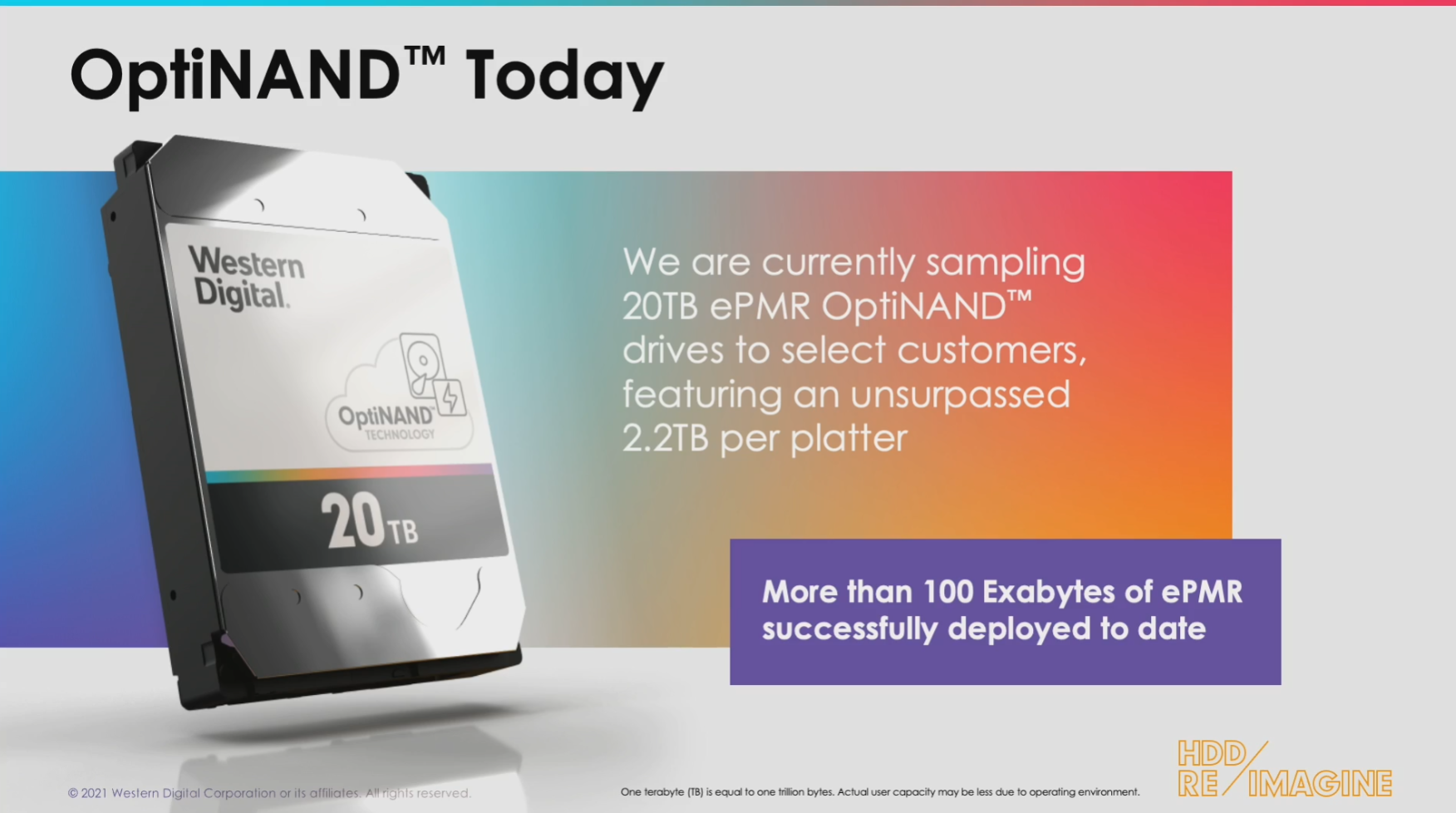
In their Q&A they said “shipping” while their slides say “sampling” which to me are different things. In either case, the technology is seemingly finished and is somewhere along the path to general market availability.
And that’s a wrap! WD deciding to avoid the assumed path of adding NAND as a tiered storage or flash cache on their drives is an interesting design choice. We hope to get ahold of these drives in the future to test their increased performance claims, and time will tell if they are able to deliver on their increased capacity and reliability promises as well.

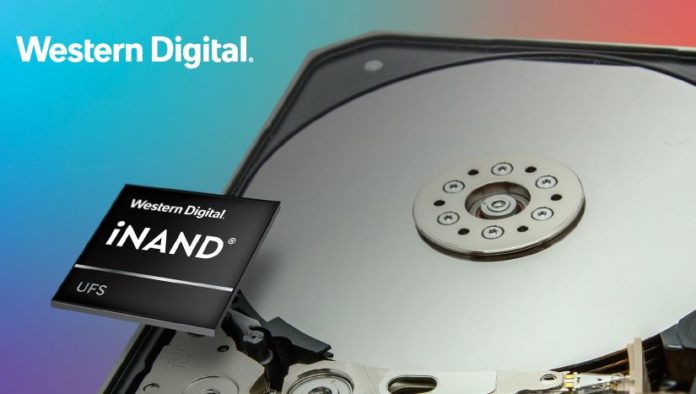


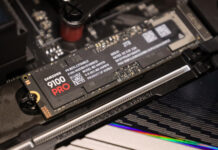
Nand has been part of SAS nearline drives a long time, but there has not been a lot of info about it. The small write latency is SSD like, so it is a big deal. While I haven’t seen it documented, from expirimentation I found that WBC needs to be off for it to kick in.
Very strange, this article, in that ALL of the reports, reviews and articles I’ve read about WD 20TB Ultrastars and GOLD HDD recently (except this article) have trumpeted that 18TB was WD’s limit on what 9 platters could extract from CMR. Every time WD commented it said the 20TB versions were SMR. Now this seems to have changed(?). I’d be very appreciative if Hans would care to comment/clarify this.
Hans, re my earlier comment, don’t worry mate, I’ve just done some further reading on some other sites and apparently you’r correct. These new 20TB HDDs are indeed CMR. This worries me – I find it hard to accept a 64GB slither of flash can enable WD to place and extra 2TB on to their 18TB CMR. Sounds like a deal done with the devil of nanotech. Will stand aside from this and watch from the sidelines. My 3 x 14TB and 1x 18TB Ultrastars will have do do me in the meantime for my home editing station! :-)
if this nice5hit makes smr as fast (iops, rwspeed) and stable as cmr
wd will make a golden egges